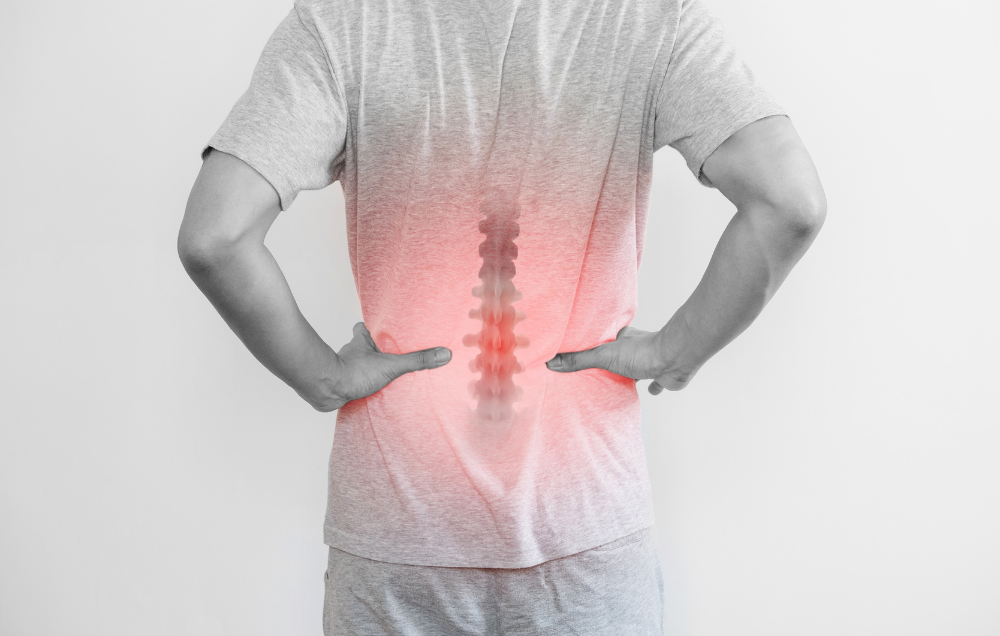Contents
It is recommended that to minimize pain and discomfort with sciatica you sit up straight, with your shoulders rolled back and shoulder blades down. Your legs should be hip distance apart, and your feet should be flat on the floor to help relax the lower body. Sitting up straight helps with sciatic pain because it helps your spine align in its natural position. If it feels difficult to sit up straight with your sciatica, then try putting a rolled-up towel or pad in the small of your back to help you keep a straight position in your back.
There are also exercises and other tips and techniques that physical therapists can offer for those living with sciatica.
3 exercises that could make sitting more comfortable with sciatica
Some exercises can be used also to make sitting more comfortable with sciatica. Sciatica often occurs because of a herniated disc or bone spur in the spine that creates pressure on the sciatic nerve. Both of these root causes can make sitting normally more difficult. Some stretches can relieve pressure in the spine and hips, helping with pain reduction and spinal alignment as you sit or go about your day. A few of the stretches and strengthening exercises a physical therapist might recommend are:
1. Lying hamstring stretch
Although this exercise is great for stretching the hamstrings, it can also be beneficial for the lower back. This exercise can help reduce pain radiating from your lower back and down one leg, which is common with sciatica. It can also help release tension on that one side of your body while also stretching parts of your leg that may be experiencing pain from sciatica as you sit.
To do this exercise, lie down on your back and keep your back and head completely flat on the floor. With both of your legs laid flat, slowly lift your right leg toward your chest until you can wrap your hands around the back of your thigh just below your knee. Your leg should be slightly bent. Use your hands to pull your leg gently toward your chest until you feel a good stretch in the back of your thigh. Hold that position for 30 seconds; then return your right leg to the starting position for 10 seconds. Repeat the stretch on each leg two to three times.
2. Knees to chest
This exercise is similar to the hamstring stretch except it focuses on stretching the lower back muscles. This can be a beneficial exercise if you have pain throughout your hips and back from sciatica and it isn’t isolated to one side.
To perform this exercise, lie down on the floor on your back with your spine and head completely relaxed. Bend both your knees into your chest or however far you can bring them toward your chest and use your hands to hold them in. When doing this exercise, your buttocks should slightly lift off the floor. Make sure to not have your head come off the floor, and keep your spine flush with the floor. Hold this position for 30 seconds and release for 10 seconds; then repeat two to three times.
3. Clamshell
This is a popular yoga and strengthening exercise. It is often used in physical therapy practices to help open up the hips, relieve pain, and strengthen the hips, buttocks, and legs. All these benefits can be helpful if you’re dealing with sciatic pain. If you experience sciatica when sitting, this exercise can help provide greater strength that can help improve your sitting posture and reduce your pain. It can also help stretch muscles surrounding the hip, which can help with opening your hips and help ease sciatica.
Start this exercise by lying on one side of your body with your knees slightly bent. Hold your head up by resting your head in your hand and placing your elbow on the floor. You should keep your abdominals engaged, and if you have trouble balancing, place your other hand on the floor to steady yourself. Keep your feet together and keep your knees bent. Then, open your legs into a diamond shape or like how a clamshell opens. Focus on opening your legs as wide as you can while still keeping your feet together. When your legs are open as wide as they can, hold that position for a few seconds; then slowly close your legs. Repeat this exercise until you’ve done two to three sets of 10 to 15 repetitions.
Lattimore PT can help you feel less sciatic pain when sitting
At Lattimore PT, we have highly trained professionals who can help you with lumbar support, exercises and other pain-reducing treatments. For example, one of our physical therapists can give you recommendations for lumbar support tools like posture correctors or pillows that may help you. However, the main tool our specialists use to address sciatica is a personalized treatment plan. This plan can include your physical therapist guiding you through exercises during your PT sessions. It may also include an at-home exercise routine for when you’re not in the clinic.
Relieving pain does not have to be difficult or limited. Working with one of our physical therapists can mean making strides toward living pain-free and getting back to moving more easily.
Contact our team today for more information about our sciatica treatment options or to schedule an initial appointment.



